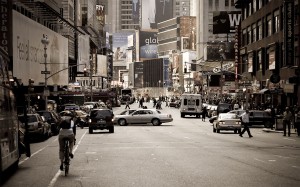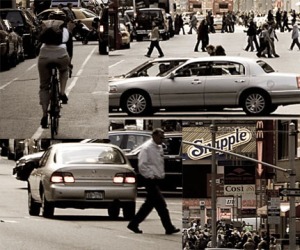-
Recent Posts
Recent Comments
digitalartsrobin on Culture Convergence rachelrayy on Your Online Identity Online Identity | mc… on Your Online Identity Archives
Categories
Blogs I Follow
Meta
cropping exercise
Posted in Uncategorized
Leave a comment
Interactive and Participatory Art
Summary
The article Interactive and Participatory art by Meg Floryan talks about the involvement of the audience in artwork over time. How even though the experience of the Audience has always been there, it is now that there is a reliance on there participation in order for artwork to b completed and have meaning. The article explains the increasing participatory work that that is created as opposed to the more traditional work. however it is not saying that Traditional work is being overlooked.
Response
I can see how participatory work has become more popular and i think that it has something to do with how as a society we feel the need to be more involved in everything. Others have mentioned the need to have instant gratification i can completely agree with that. I also feel like the younger generation is intrigued but the idea of this form of art instead of just viewing traditional art. I myself enjoy both but when it comes to Participatory art its makes it all come full circle in terms of meaning and concept.
Posted in Uncategorized
Leave a comment
Remediation
Summary
In the book Remediation: Understanding New Media, the authors Jay Bolter and Richard Grusin explain that in remediation it is the process of one media informing another’s identity. “We offer this simple definition: a medium is that which remediates. It is that which appropriates the techniques, forms, and social significance of other media and attempts to rival and refashion them in the name of the real” (Bolter & Grusin, 2000, p. 65). They wanted to explain the idea of keeping the old media and using it to make a new media that would still incorporate both. An example they give is movies.
Response
The idea of remediation and reverse remediation is very interesting. By using a new form of media I can completely change an older previous work. As artists we are constantly trying to better ourselves and look for new ideas to help us get that much further in our careers. Remediation allows us to continue a previous work or completely redo it. Even in today’s society where we are always looking for the next new and best thing, it is nice to know that there is still a way for more traditional style works to be show.
Posted in Uncategorized
Leave a comment
Summary
In the article Introduction: “Worship at the Altar of Convergence” it starts off giving the example of Dino Ignacio whose project “Bert is Evil” gained a lot of protest after the events of September 11. It explains how through media convergence, the image is able to go through the media around the world so it becomes widespread. The article also goes on to explain that a medium for media can change its content and who it targets to view the content. It gives the example that with the television available, the radio was able to step away from story telling and focus on music.
Response
What interested me most about this was the idea of how Ignacio’s image of Bert with Bin Laden wasn’t as controversial until after 9/11. The media exploited the tragedy and coupled with the emotions of the people, the picture was received horribly. The media can twist anything to fit their story and the majority of the viewers will react how they were expected to. Things get blown out of proportion because no one stops to think how trivial it really is. People see how everyone else is reacting and follow suit. Just as fast as it starts though the media can make it disappear.
Why do we follow everyone else in terms of reactions when we just have to stop and see how ridiculous it is? Does the Media, no matter what medium hold the power?
Your Online Identity
http://web.wellesley.edu/SocialComputing/Netiquette/netiquetteothersites.html
Summary:
Wellesly College has written a short article that shares information about what we should look at when creating online accounts. It asks us to read the privacy agreement so that we will understand how the site will use the information we post. It gives the example of Facebook having rights to everything we put on there. The article warns us about putting too much personal information that could put us in danger of someone followings us or being able to contact us. As well as worrying about how we make ourselves look online we also have to be aware of tagging others in pictures could get the people you tagged or even you into trouble. The College asks us to think of all these things when creating our online identity as employers are looking at our online accounts more frequently when deciding if they want to hire.
Response:
All of this should be common sense but I still see people everyday posting things that could be used against them. The privacy issue is a good one considering how everyone is up in arms when they hear that the government will have access to everything and yet they put everything on Facebook. So many people put their phone numbers on the profile pages without having any privacy settings which makes their outrage kind of questionable. We already know that the internet isn’t exactly the most private place but we still like to keep a false sense of security. People like to think that their friends are the only ones looking at their profile and not the government, a future employer, or even a stalker. We don’t filter ourselves like we should and that is our own fault.
If we are so worried about people checking everything we do, why do we continue to advertise it? Why can’t we seem to censor ourselves?
Posted in Digital Literacy
2 Comments




